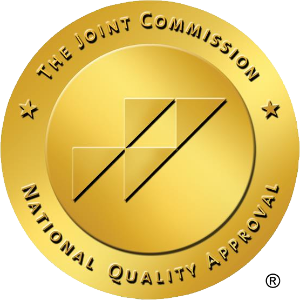Opioid addiction has ravaged the nation over the last decade, with an astounding number of lives lost to overdose. According to statistics published by the National Institute on Drug Abuse (NIH), deaths attributed to opioids rose from 8,000 in 1999 to 47,600 in 2017, a six-fold increase. These numbers are so high and so heartbreaking that it begs the question, “Why?”
Some people may have found themselves addicted to pain medications that were legitimately prescribed by a doctor following surgery or an injury, while others may have misused opioids recreationally resulting in addiction. Investigations into the unscrupulous practices of doctors along with the pharmaceutical companies that manufacture these drugs has exposed a significant source of over-prescribing the drugs for financial gain. In addition, counterfeit opioids that contain the deadly synthetic opioid fentanyl have exponentially increased the risk for overdose death.
In Utah, overprescribing doctors have contributed to the epidemic. The NIH reports that in 2017 physicians in the state wrote 63.8 prescriptions for opioids for every 100 citizens of Utah, likely contributing to the deaths of 456 residents that year due to an opioid overdose, a higher rate than the national average.
For individuals who are in the grip of opioid addiction there is hope. In recent years medication-assisted treatment, also known as MAT, has proven to be effective in sustaining abstinence and reducing the risk of relapse. Whend MAT is combined with ongoing psychotherapy and other continuing care efforts, recovery from opioid addiction is made possible.
Prescription Opioid Addiction Utah
Prescription opioids, such as oxycodone and hydrocodone, are analgesics that bind to the opioid receptors in the brain and cause it to release a flood of dopamine into the body. This produces feelings of euphoria, reduces pain, and elevates mood, at least initially.
When an individual consistently uses the opioids the constant high levels of dopamine surging through the body will eventually increase tolerance to the drug. The user begins to need more and more of the drug just to feel somewhat normal. Eventually the brain stops producing its own dopamine as it becomes reliant on the drug to do this function. Attempts to stop using the drug result in the onset of highly uncomfortable withdrawal symptoms, which is the sign of addiction.
Over time, the opiate addiction leads to impaired reasoning skills, poor problem-solving skills, problems with behavior regulation, and impaired memory. Physical consequences of long-term opiate addiction can include liver disease, heart problems, blood pressure problems, weight loss, and collapsed veins with intravenous use.
Signs of Opioid Addiction Utah
Because opioids directly impact the opioid receptors in the brain, blocking sensations of pain and producing a deeply relaxed state, the brain registers these pleasant effects as a positive experience. This is registered in the brain’s reward pathways, leading to repeated and increased dosing, resulting in addiction or chemical dependency.
While the signs and symptoms of opioid abuse or addiction vary, there are some common warning signs that someone has an opioid problem. These include:
Physical symptoms
- Dry mouth
- Chronic constipation
- Impaired vision
- Increased heart rate
- Constricted, pinpoint pupils
- Needle marks on arms or legs
- Decreased appetite
- Increased energy
- Sleep disturbances
- Hyper-arousal
- Elevated blood pressure
Psychological symptoms
- Irritability
- Depression, suicidal thoughts
- Anxiety
- Euphoria
- Apathy
- Psychosis
Behavioral symptoms
- Isolating behavior, withdrawing from friends and family
- Loss of interest in once important activities
- Problems in relationships
- Declining work or academic performance
- Obsessed about obtaining more of the drug
- Financial problems
- Legal problems
- May develop a secondary substance use disorder
- Increased tolerance to the drug, needing more and more
- Unable to quit even when desire to
The Opioid-Heroin Connection
Opioids are extremely addicting, even taking as little as two weeks to cause addiction. Someone who is addicted will, when the prescription runs out, or the individual can no longer afford the drug, experience withdrawal symptoms. This leads to desperate actions to attempt to obtain more of the drug. The individual may search for the opioids online or even purchase the pills on the street. Some may begin doctor shopping, hoping to obtain a new prescription from a different doctor. But when all attempts to secure the drug fail, the individual may shift from prescription opioids to heroin.
Heroin is also an opioid, created from morphine, which is derived from the opium poppy plant. Heroin is classified as a Schedule I narcotic, meaning it is not only illicit but also highly addictive. The Institute of Medicine of the National Academy of Science has reported that about 25% of the individuals who try heroin will become addicted to the drug.
Prescription opioids have a similar effect to heroin, so gravitating to heroin when the synthetic opioids are no longer available or affordable is a natural step for the addict to take. According to the National Institute on Drug Abuse, the majority—about 80%–of heroin users report that they first misused prescription opioids. Heroin offers these individuals an affordable and accessible replacement for prescription opioids.
How Fentanyl has Increased Overdose Risk
Fentanyl is a powerful narcotic analgesic manufactured under the brands Duragesic, Abstral, and Subsys, and is used by physicians to control pain in patients with serious illnesses, such as cancer. The compound that makes up fentanyl is easy for nefarious people to reproduce, and has become widely distributed in street drugs or over the Internet, sometimes masquerading as other medications. It has also found its way into the street heroin, where unsuspecting addicts are unaware that the heroin they purchased could cause almost instant death. Fentanyl is also being found in counterfeit opioids like oxycodone and benzodiazepines, as well as cocaine and methamphetamine.
The presence of fentanyl in today’s illicit drug supply has significantly increased the risk of overdose in the past three years. The Centers for Disease Control (CDC) reported that overdose deaths caused by fentanyl doubled in a 6-month period in 2017. The drugs is so potent that law enforcement and first responders fear having any contact with the substance, as just a few granules can produce fatal respiratory effects. Fentanyl is said to be 50-100 times more powerful than morphine and 50 times more powerful than heroin.
Outpatient vs. Residential Treatment
Inpatient treatment: A residential or inpatient treatment program offers 24/7 monitoring and support during the treatment process. These comprehensive programs offer a combination of treatment protocols, including one-on-one talk therapy using such modalities as cognitive based therapy and psychodynamic approaches, group therapy, addiction and relapse education, guest speakers, recovery group meetings such as 12-step or non 12-step programs, and adjunct therapies such as acupuncture, massage, yoga, meditation, and art therapy. Medication assisted treatment can be included, which would include certain drugs that help reduce cravings and withdrawal symptoms.
Outpatient treatment: An outpatient program benefits those with less severe OxyContin addictions who would be free to live at either their own home or a sober living home while continuing to work during treatment. Outpatient drug treatment Utah programs offer a variety of levels of care determined by the individual’s specific needs and whether there is a co-occurring mood disorder. Treatment involves individual therapy, group therapy, relapse prevention, life skills classes, and case management.
Dual diagnosis treatment: Anxiety disorder, major depressive disorder, post-traumatic stress disorder, and bipolar disorder are often present alongside the heroin or opioid addiction. Residential addiction programs that provide dual diagnosis services—addiction recovery expertise plus psychiatric services—are the preferred option for those with a co-occurring mental health condition. These programs are designed to offer the necessary clinical expertise to effectively treat both the addiction and the mental health disorder simultaneously.
Treatment for Opioid Addiction Utah
When seeking help for an opioid addiction it can be useful to have a basic understanding of the treatment process. Recovery occurs on a continuum, starting with detox. Each step of the process helps the individual become stronger, more educated about addiction, and more emotionally stable. A high quality recovery program will provide all of these treatment aspects:
Medical detox. To detox from opioids safely it is important not to stop suddenly. Instead, a medical detox program will schedule a tapering process allowing the body to slowly adjust to the incrementally reduced dosing over a period of up to two weeks. To help subdue the withdrawal symptoms, the detox team will provide medications and emotional support.
Psychotherapy. At the heart of opioid treatment is gaining key insights about what might have fueled the addictive behavior, including past trauma, deep emotional pain or disturbance, a co-occurring mood disorder, a dysfunctional family dynamic, grief and loss, or thought distortions that keep the individual in the cycle of addiction. Therapy provides a safe, supportive setting to process these factors while providing a road map toward healthier thoughts and actions.
MAT. A medically trained detox team will provide the detox protocol for opiate withdrawal by the use of medications, such as methadone, naltrexone, Suboxone, or buprenorphine, which help step the addict down to a less potent opioid that also helps block cravings for the opioid.
The drugs work by attaching to the brain’s opioid receptors and tricking the brain into thinking it has received the drug of abuse. This helps the individual transition into recovery with a reduced risk of relapse.
Peer support. Cultivating mutual peer support while in recovery is an essential treatment element. A licensed therapist will introduce discussion topics related to addiction and recovery that allow the participants to share their personal stories, challenges, and successes as they traverse the recovery journey together.
Complementary activities. Recreational activities promote both physical and mental wellness in recovery. Outdoor activities offer a balance point in rehab, providing an opportunity to engage in group sports, hiking, running, and swimming. Holistic and experiential activities help induce relaxation, introspection, and self-empowerment. Holistic activities might include mindfulness meditation, yoga classes, equine therapy, art therapy, and journaling.
Aftercare. By engaging in activities that act as a reinforcement to sobriety, the chances of maintaining a sustained recovery are greatly increased. Aftercare options provide a safety net where the individual will receive peer and professional support to help navigate these stressors. There are a variety of aftercare activities or resources, such as:
- Sober housing. If the home setting is stressful or family members are not supportive of the individual’s recovery efforts, then it is not conducive to a achieving a sustained recovery. A sober living environment offers a supportive home setting that is free of substances, allowing the person fresh out of residential treatment to practice using recovery tools and stabilizing further prior to returning to the family home.
- Recovery communities. While Alcoholics Anonymous and the 12-step program used in its A.A. and N.A. communities is the most accessible, there are also non 12-step programs that provide the same type of social support. Whichever program is preferred, these communities offer fellowship and peer support, as well as a sense of accountability.
- Support groups. Individuals in opioid addiction recovery who also have a co-existing mental health issue may find additional support in groups that are specific to depression, anxiety, or bipolar disorder. Managing a mental health disorder in recovery is imperative, and a mental health support group adds another layer of peer-based support.
- Ongoing psychotherapy. Continuing to engage in therapy is essential in opioid addiction recovery, and is mandatory if MAT is involved. Therapy provides a consistent source of ongoing support during early recovery, assisting individuals in overcoming the hurdles that are often encountered in recovery and helping them to remain abstinent.
Unwinding the brain’s dependence on the drug takes time, requiring much patience and lots of commitment. But with a positive attitude and an integrated opioid recovery program to guide you, a life filled with hope and promise is attainable.
Next Level Recovery Provides Treatment for Opioid Addiction Utah
Next Level Recovery is a fully integrated addiction recovery program that treats individuals with opioid addiction in Utah. Next Level Recovery provides medical detox services, day treatment, outpatient rehab, residential treatment, and sober living housing. For more information about this comprehensive addiction recovery program, please call us today at (801) 386-9799.




